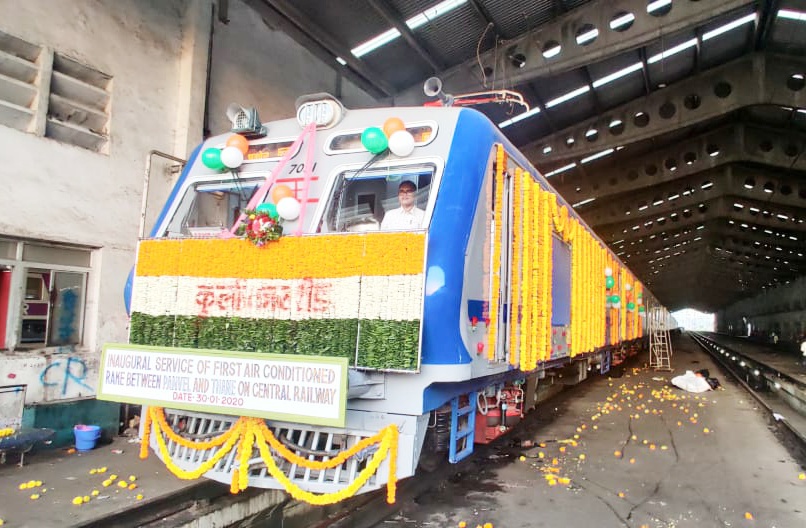AC Local: Poor public response in the trans-harbour line
Central Railway plans to introduce second class tweaking the fare structure
Passengers are not migrating to AC local due to prohibitive fares compared to non-AC Second Class, says CR report
First and Second Class categorization of coaches is necessary in AC locals if demand for AC services is to improve, says a Central Railway (CR) report
With this combination, migration of Second Class passengers can be made possible. The fare for second AC will be higher than second non-AC but lower than first class non-AC
A little more than two weeks after first AC local on Central Railway’s suburban network – 16 services daily, on the Thane-Vashi-Panvel Trans-Harbour Line – this is the blunt assessment delivered by one of the most senior officials in CR.
In a confidential letter to the Member Traffic, Railway Board, Dilip Kumar Singh, Principal Chief Operations Officer, CR, makes it clear that the inaugural service has been met with poor response by the public – “the patronization of the AC EMU rakes is not encouraging – and lays out various options available before the authorities to make the new service more popular. A similar demand for reduction in AC fares has been made by public representatives”, Singh says.
“A detailed analysis of various factors, difficulties and hurdles confirms that AC EMU rakes cannot be introduced as an additional service”, according to Singh.
Among the hurdles that a note accompanying the letter mentions are: non-availability of space for introduction of any kind of new services on CR routes (AC rakes are being introduced only by replacing existing services); poor patronage – mainly due to high fares; and heavier rush on non-AC locals following AC trains, leading to overcrowded platforms and extra congestion.
The main takeaway from the analysis, according to Singh, is that passengers are not migrating to the AC train due to prohibitive fares compared to non-AC Second Class – “only First Class travellers tend to migrate to AC.”
“Fare of AC EMU is 1.3 to 2.6 times that of First Class fare. 10% of total suburban travel is by First Class and 90% by Second Class,” Singh says, adding for the 90% of Second Class passengers, the difference in fare is too high.
The report then lays out options available before the railways and details the merits and demerits of each option.
The alternatives include: AC rakes with First and Second Class coaches; and rakes with AC and non-AC combination.
The report says a reasonable fare structure for second AC will be acceptable to passengers, who won’t mind paying a little extra for increased comfort and risk-free travel environment.
“Distinct differentiation between First and Second class is required to be made,” the report says. First Class compartment should be provided with cushioned seats, mobile charging facilities, etc, and facilities for disabled people and senior citizens should be improved; First Class should have more seating capacity compared to the proportion of passengers, it adds.
The report recognises that initially second AC season ticket holders will have difficulties until conversion to AC rakes is complete. “Since the introduction [of AC rakes] will be in phases, the fares need to be gradually increased,” it says.
“AC travel has certain distinct advantages such as enhanced safety, comfort and improved productivity. Thus increase in fare will be acceptable to passengers. It is suggested that the fare of First and Second Class should be so adjusted as to attract volume of passengers.. so that overall revenues received after full conversion of AC rakes is higher than that of conventional rakes”.
With the suggested changes in the fare structure, revenues are likely to increase 70 to 80% once all locals have been converted to AC, it adds.
The report makes a special mention of the student community and says they should be given concessions in AC locals.
Courtesy: Mumbai Mirror
#centralrailway @ACLocal #pcom #cr


